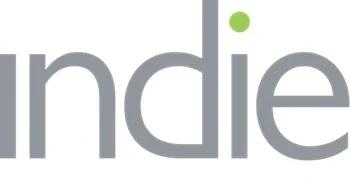From indieReviewed by Olivia FrostDec 6 2024
Distributed Feedback (DFB) laser diodes are an advanced form of edge-emitting laser, notable for their unique structure, which utilizes a periodic grating instead of a conventional mirror cavity. TeraXion, a leader in low-noise laser technology, has recognized the value of DFB lasers and developed a proprietary version that offers enhanced noise control and frequency stability.
In this interview, Patrice Dionne, M.Sc, the product line manager for optical sensing at TeraXion, talks to AzoOptics about TeraXion's motivations and innovations in DFB laser technology and various real-world applications where their technology truly shines.
Could you start by explaining Distributed Feedback (DFB) laser diodes and what distinguishes them from other laser types?
Distributed Feedback, or DFB, laser diodes are a type of edge-emitting laser that operates with a unique structure. They use a periodic grating structure instead of the traditional cavity with two mirrors inside.
This grating structure distributes reflection across the gain medium, creating a single-mode emission with a narrow linewidth. These lasers are highly stable, reliable, compact, and, compared to other laser types, more cost-effective.
This is why DFB lasers have been widely used in telecommunications for years. They are small, affordable, and dependable, which have also driven TeraXion’s interest in and innovation in DFB technology.
What motivated TeraXion to develop its own DFB laser diode, and what are the main differentiators of this technology?
TeraXion has been involved in low-noise laser technology for quite some time, and we saw a need for a DFB laser diode with enhanced noise control and frequency stability. The technology we developed has two key differentiators: its intrinsically narrow linewidth and a flat frequency modulation response.
The narrow linewidth ensures the laser maintains a consistent frequency, significantly reducing frequency noise. Our flat frequency modulation response allows the laser to handle fast modulation without distorting its frequency characteristics.
Together, these features provide high stability and fast modulation capabilities, which are critical for applications that rely on precise frequency control.
How does the frequency modulation response of TeraXion’s DFB lasers impact their performance in real-world applications?
The flat frequency modulation response of our DFB lasers is a real game-changer for applications that need both stability and responsiveness. In typical DFB lasers, when you increase the modulation frequency, thermal and carrier effects cause the frequency response to shift and drop in amplitude.
Our DFB laser, however, maintains a flat response up to high modulation frequencies, avoiding these distortions. This allows it to provide a clean and consistent output across various frequencies. For applications like LiDAR and fiber-optic gyroscopes, this flat response translates to improved accuracy and sensitivity.
Can you give examples of applications that benefit TeraXion’s DFB laser technology?
Significant applications include FMCW LiDAR, resonance fiber optic gyroscopes, and distributed fiber sensing. In FMCW LiDAR, for instance, our lasers support high linearity in frequency chirps, which is critical for precise distance measurements.
In resonance fiber optic gyroscopes, we use multiple lasers in a phase-locked loop to monitor clockwise and counterclockwise resonances. Our low differential noise levels between the lasers lead to more accurate rotation measurements. The flat modulation response also allows for stable and precise frequency shifts in fiber sensing, enhancing sensitivity and range.
Could you explain the significance of phase and frequency locking and how TeraXion’s technology advances these capabilities?
Phase and frequency locking are methods used to synchronize laser frequencies to a reference or each other, which is crucial for applications requiring extreme frequency stability.
Our DFB lasers can achieve high bandwidth for frequency and phase-locking loops thanks to their flat frequency response. In phase locking, maintaining a stable beat frequency between two lasers helps create accurate interference patterns in gyroscopes, which leads to precise measurements.
The flat frequency response of our DFB lasers allows us to implement high-performance locking loops that remain stable even at high frequencies.
When it comes to frequency chirps in LiDAR applications, what makes TeraXion’s DFB lasers particularly effective?
In LiDAR applications, high-amplitude, linear frequency chirps are essential for accurate depth perception and object detection. Our DFB laser’s flat frequency modulation response makes it particularly effective here.
It enables us to apply triangular or saw-tooth modulation without introducing non-linearities, which could otherwise distort distance measurements. For example, when generating frequency chirps, we can apply slight waveform corrections to enhance linearity without compromising stability. This leads to improved detection accuracy and better overall LiDAR performance, particularly at higher modulation speeds.
Finally, what possibilities do you envision with this DFB laser technology, especially regarding integration and system design?
We are excited about the potential to create compact, low-cost, and highly integrated systems. The DFB laser diodes' small size makes them ideal for integration into photonic circuits, enabling compact designs for applications like multi-channel LiDAR and advanced optical sensing modules.
By combining our laser diodes with components like semiconductor optical amplifiers and silicon photonics, we can create powerful solutions for complex applications.
In the future, I envision our lasers in even more demanding environments, where their compactness and ruggedness can support field-deployed systems, bringing high-performance photonics to a broader range of industries.
About Patrice Dionne
Patrice Dionne, M.Sc., is the Optical Sensing Product Line Manager at TeraXion, overseeing the LXM narrow-linewidth DFB laser. With a background in engineering physics and over 10 years of professional experience in optical sensing, he has worked on a wide range of photonic applications, including bio-imaging, lidar, and fiber sensing.
About indie
indie, one of the fastest-growing technology innovators, is dedicated to developing advanced silicon, photonics, and sensor system solutions demanded by the automotive, industrial mobility and adjacent applications. We take immense pride in engineering solutions that are not only high-performance but also address the power, area, and total cost-of-ownership challenges our customers face. indie has acquired both TeraXion Inc. and EXALOS AG.

This information has been sourced, reviewed and adapted from materials provided by TeraXion Inc.
For more information on this source, please visit TeraXion Inc.
Disclaimer: The views expressed here are those of the interviewee and do not necessarily represent the views of AZoM.com Limited (T/A) AZoNetwork, the owner and operator of this website. This disclaimer forms part of the Terms and Conditions of use of this website.